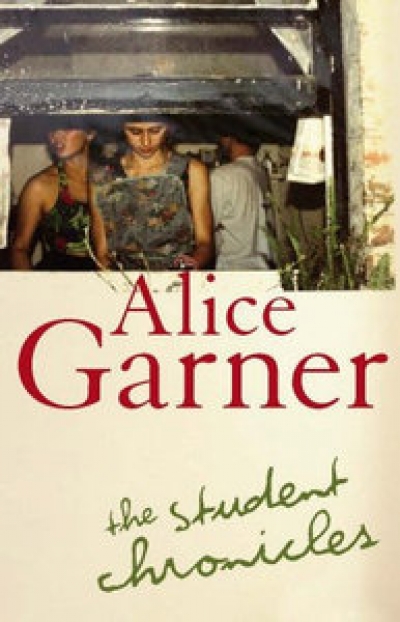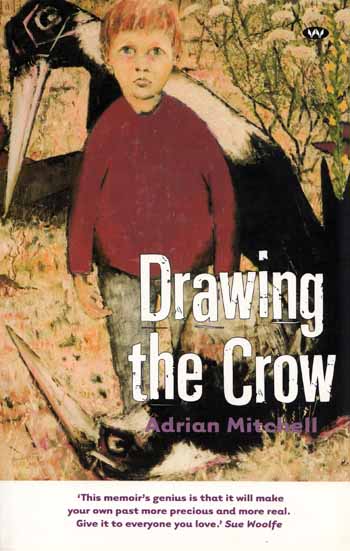Memoir
In Alice Pung’s memoir of her childhood, Unpolished Gem, her young self is drawn into a conflict between her mother and grandmother, both Chinese-Cambodian refugees. The child becomes a double agent, informing each about the other, until her mother accuses her of ‘word-spreading’ and threatens suicide. The child frets over her breakfast: ‘I always spread my jam on toast all the way to the very edges – no millimetre of bread is left blank and uncovered. My word-spreading habits are similar.’
... (read more)By the Balls: Memoir of a football tragic by Les Murray
IBy the Balls opens in the 1950s, when young Laszlo Urge and his family were forced to leave Stalinist Hungary and head to Australia. Laszlo was shocked to find his new country to be a ‘dry and colourless’ place where soccer (which he refers to as ‘football’) was unpopular. However, this situation was to change. In the following decades, Laszlo became ‘Les Murray’, a popular television sports commentator who has publicly championed his favourite game.
... (read more)Fast, Loose Beginnings: A memoir of intoxications by John Kinsella
John Kinsella’s new memoir, Fast, Loose Beginnings, may have been published by the august publishing house of Melbourne University Publishing, but it is nevertheless a garage-band of a book. It is, as its title signals, both fast and loose. Its rhythms aren’t always graceful, and its timbres aren’t always smooth. You can almost hear the hum of the amplifiers. The poet Jaya Savige, in his review of the book for the Sydney Morning Herald, commented on the book’s lack of polish.
... (read more)On the face of it, One Day In July might induce a state of groaning, as yet another ‘victim’ with attendant publisher prepares to cash in by virtue of a rank media with an appetite for ‘terror’. Remember Douglas Wood, hostage in Iraq, triumphant with that VB stubby in hand? Now our potential hero is Experiencing 7/7 across the front cover as Survivor of the Edgware Road Bomb. One wonders how many more dates, not to mention people, will be claimed and maimed in this manner. On the back: the injured figure of the author, as seen in newspapers and by television audiences worldwide, repeated.
... (read more)Despite its rather grandiose title, Alice Garner’s The Student Chronicles is a friendly, unpretentious book. It is a coming-of-age story, set mostly in libraries – an anti-Monkey Grip, or a love letter to geekdom. The only sex happens behind closed doors; the real romance is with the library. ‘I loved the Baillieu Library so much I wrote a really bad poem about it,’ Garner confesses, with characteristic self-deprecation. Occasionally, she takes her reader by the hand – like a less precious Alain de Botton – and guides them towards the classics. Thus she introduces Montaigne, a partial model for this book, as a writer of ‘disarming modesty and honesty’, two qualities that the author herself possesses.
... (read more)Justice Michael Kirby’s launching of Sir Zelman Cowen’s memoirs at the Melbourne University’s Woodward Centre in early June was a great Melbourne occasion. Two of Cowen’s successors as governor-general, Sir Ninian Stephen and Archbishop Peter Hollingworth, attended as part of a galaxy of judges, barristers, academics and a scattering of ex-politicians. The occasion was a festival of oratory, with five substantial speeches, possibly an Australian record for a book launch.
... (read more)Helga Griffin (née Girschik), conscious that memories differ and that her own is not infallible, is careful to respect the other people implicated in her story. Aware of her responsibility to them, she is nonetheless committed to breaking what she calls the Schweigen, the long silence. Sing Me That Lovely Song Again is highly apposite in its account of the damaging experience of internment. During the years of World War II, the Girschik family were incarcerated as enemy aliens in a camp at Tatura, in northern Victoria. They were displaced persons. The adults were fated to spend what should have been highly productive years trapped in a frustrating stasis that was to have long-term effects. For the children, this experience must have been formative. How were they to understand their confinement and the distress of the adults? This resonates strongly when we consider the ‘illegal aliens’ or refugees, many of them children, recently locked up in detention centres in this country. Although Griffin does not make this parallel explicit, it is implicit in the way her narrative situates her family’s experience within a larger historical context.
... (read more)Due to some clever product placement (James Bond and wife bashing) Diane Cilento’s Nine Lives have become public property, even before the reader picks up the book. We know it all: she is a member of a celebrated Australian family and made her reputation in some famous movies; she had three husbands, including two well-known ones; she set up a theatre commune in North Queensland. We even know from the gossip columns details that are not in the book: the farcical story of the last days of her third husband, the wonderful Tony Shaffer (worth a hundred Sean Connerys), his London mistress and the Shaffer inheritance. I flick through the book, notice the enthusiastic style, look at the not-quite-thrilling photographs, dip into the quite amusing anecdotes, and study the index in vain for the name Jo Jo Capece Minutolo, Tony’s mistress, whom everyone has been talking about. She has called the book ‘inappropriate’; Connery has called it ‘a crock of shit’.
... (read more)Left Bank Waltz: The Australian bookshop in Paris by Elaine Lewis
Elaine Lewis established and ran the Australian Bookshop in Paris from 1996 to 1998. It acted as an outlet in France for Australian books, a nexus for travelling Australian writers and a cultural hub in the Parisian arts scene. This is the story of the bookshop in its heyday, before Lewis returned to Australia and the bookshop retired to an online existence.
... (read more)I had never been to Adelaide in my life when I arrived for an interview that, as it turned out, would result in my spending the next twenty-five years in South Australia. The early November heat was too much for my Melbourne best suit, and I was carrying my coat when I walked gratefully into a city pub for a post-interview beer. In the bar – air conditioned down to a level threatening patrons with cryogenic suspension – I tried Southwark and then West End, finding both just drinkable, and lingered in front of a wall poster about the Beaumont children, by that time missing for nine or ten months.
... (read more)

.jpg)








